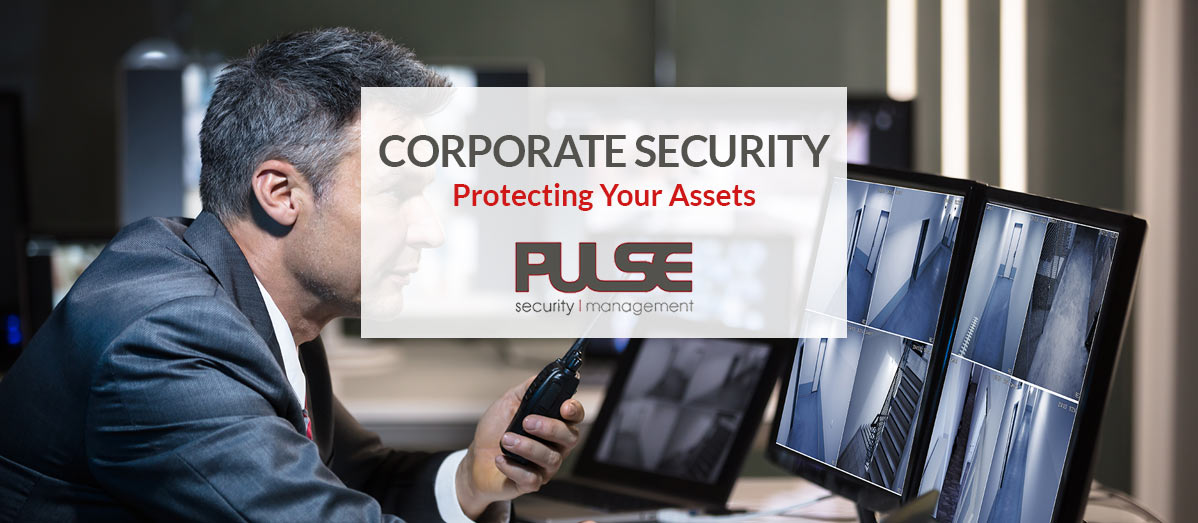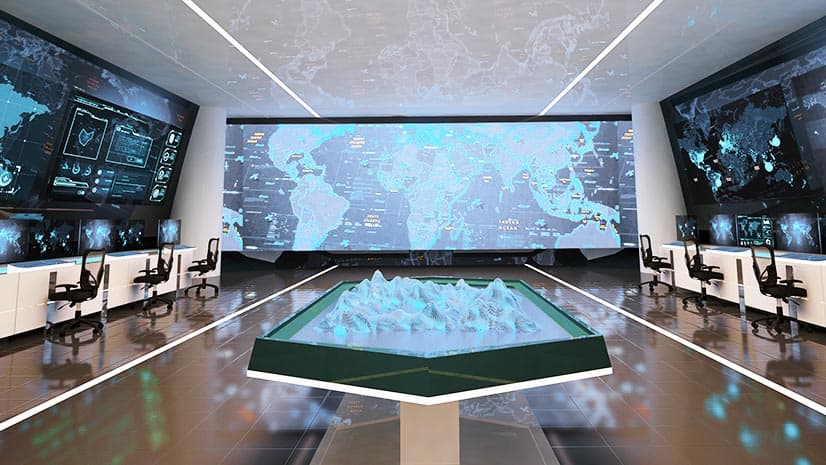Enhance Corporate Security: Strategies for a Robust Defense
Enhance Corporate Security: Strategies for a Robust Defense
Blog Article
From Cybersecurity to Physical Procedures: Strengthening Company Protection in an Altering Globe
In today's quickly progressing digital landscape, the relevance of business protection can not be overstated. As cyber dangers come to be widespread and significantly innovative, organizations need to exceed conventional cybersecurity actions to safeguard their operations and assets - corporate security. This is where the assimilation of physical security steps comes to be important. By incorporating the strengths of both cybersecurity and physical safety and security, firms can develop an extensive defense method that resolves the diverse variety of dangers they encounter. In this discussion, we will explore the altering danger landscape, the requirement to incorporate cybersecurity and physical security, the implementation of multi-factor authentication procedures, the value of worker recognition and training, and the adjustment of protection measures for remote workforces. By examining these essential areas, we will acquire important insights into how organizations can strengthen their corporate security in an ever-changing globe.
Understanding the Transforming Danger Landscape
The advancing nature of the modern world demands a comprehensive understanding of the altering danger landscape for reliable corporate safety. It is critical for organizations to stay notified and adjust their protection gauges to address these developing dangers.
One trick aspect of understanding the altering risk landscape is acknowledging the various kinds of hazards that companies face. Cybercriminals are constantly developing new techniques to make use of vulnerabilities in computer systems and networks. These dangers can vary from malware and ransomware assaults to phishing frauds and social engineering techniques. Furthermore, physical dangers such as burglary, vandalism, and business espionage remain prevalent concerns for businesses.
Tracking and assessing the risk landscape is necessary in order to determine prospective dangers and vulnerabilities. This entails remaining upgraded on the most current cybersecurity patterns, analyzing hazard knowledge reports, and conducting normal danger assessments. By recognizing the altering threat landscape, companies can proactively execute ideal security procedures to reduce threats and secure their assets, online reputation, and stakeholders.
Integrating Cybersecurity and Physical Safety
Incorporating cybersecurity and physical safety is essential for comprehensive business defense in today's electronic and interconnected landscape. As organizations significantly rely upon technology and interconnected systems, the borders between physical and cyber dangers are becoming blurred. To properly protect versus these dangers, an all natural method that incorporates both cybersecurity and physical safety and security actions is essential.
Cybersecurity concentrates on protecting digital properties, such as systems, data, and networks, from unapproved accessibility, disruption, and theft. Physical safety, on the various other hand, incorporates procedures to secure physical properties, individuals, and facilities from vulnerabilities and risks. By incorporating these 2 domain names, organizations can deal with vulnerabilities and dangers from both electronic and physical angles, therefore enhancing their overall safety and security pose.
The assimilation of these 2 techniques permits for an extra comprehensive understanding of safety and security risks and allows a unified reaction to cases. For example, physical access controls can be enhanced by integrating them with cybersecurity protocols, such as two-factor authentication or biometric identification. Cybersecurity actions can be enhanced by physical protection procedures, such as monitoring cams, alarm systems, and safe and secure accessibility points.

Applying Multi-Factor Authentication Steps
As companies increasingly prioritize thorough security procedures, one reliable approach is the application of multi-factor verification actions. Multi-factor authentication (MFA) is a safety approach that requires users to supply numerous kinds of recognition to access a system or application. This approach adds an additional layer of defense by combining something the user understands, such as a password, with something they have, like a security or a fingerprint token.
By executing MFA, organizations can substantially boost their security position - corporate security. Standard password-based authentication has its restrictions, as passwords can be quickly endangered or neglected. MFA alleviates these threats by including an added verification aspect, making it harder for unapproved people to access to delicate info
There are a number of kinds of multi-factor authentication methods readily available, consisting of biometric authentication, SMS-based confirmation codes, and equipment symbols. Organizations require to examine their certain needs and select the most suitable MFA solution for their demands.
Nonetheless, the application of MFA must be very carefully prepared and performed. It is essential to strike a balance in between safety and usability to prevent customer frustration and resistance. Organizations should additionally think about potential compatibility concerns and supply sufficient training and assistance to make sure a smooth transition.
Enhancing Staff Member Understanding and Training
To strengthen company safety and security, companies need to prioritize boosting employee recognition and training. In today's rapidly advancing risk landscape, employees play a vital role in guarding an organization's delicate information and properties. Several safety and security violations occur due to human mistake or absence of awareness. As a result, companies need to purchase comprehensive training programs to inform their staff members about prospective threats and the very best practices for mitigating them.
Effective employee awareness and training programs ought to cover a wide variety of subjects, consisting of information protection, phishing attacks, social engineering, password hygiene, and physical protection measures. These programs ought to i was reading this be tailored to the particular demands and responsibilities of different employee roles within the organization. Regular training workshops, simulations, and sessions can aid staff members create the essential abilities and expertise to recognize and react to safety and security dangers effectively.
Additionally, organizations need to urge a culture of protection understanding and offer recurring updates and tips to keep employees informed regarding the most up to date risks and mitigation techniques. This can be done through inner communication networks, such as newsletters, intranet portals, and email projects. By promoting a security-conscious workforce, companies can substantially decrease the chance of protection incidents and shield their important properties from unauthorized accessibility or compromise.

Adapting Safety Actions for Remote Labor Force
Adapting corporate safety actions to accommodate a remote workforce is important in making sure the defense of delicate information and assets (corporate security). With the enhancing fad of remote job, companies must execute suitable safety procedures to minimize the threats related to this new my company method of working
One important element of adjusting safety procedures for remote work is developing safe and secure interaction networks. Encrypted messaging systems and online personal networks (VPNs) can help safeguard sensitive information and protect against unauthorized accessibility. In addition, companies must impose using strong passwords and multi-factor verification to improve the safety of remote access.
Another vital factor to consider is the application of protected remote access options. This entails giving workers with safe about his access to company sources and data via online desktop framework (VDI), remote desktop computer protocols (RDP), or cloud-based solutions. These modern technologies make sure that sensitive details stays safeguarded while allowing employees to execute their functions effectively.

Finally, detailed protection awareness training is important for remote workers. Educating sessions need to cover ideal practices for securely accessing and dealing with sensitive info, determining and reporting phishing efforts, and preserving the general cybersecurity health.
Verdict
In final thought, as the threat landscape proceeds to progress, it is essential for organizations to reinforce their safety and security measures both in the cyber and physical domain names. Integrating cybersecurity and physical security, carrying out multi-factor authentication actions, and improving employee recognition and training are vital steps in the direction of achieving durable corporate protection.
In this discussion, we will certainly check out the transforming risk landscape, the demand to integrate cybersecurity and physical protection, the application of multi-factor verification steps, the relevance of worker recognition and training, and the adaptation of protection steps for remote labor forces. Cybersecurity steps can be matched by physical security steps, such as security video cameras, alarm systems, and safe and secure gain access to factors.
As companies increasingly focus on comprehensive safety actions, one efficient strategy is the execution of multi-factor authentication procedures.In verdict, as the threat landscape continues to progress, it is crucial for organizations to enhance their protection measures both in the cyber and physical domain names. Integrating cybersecurity and physical security, applying multi-factor authentication actions, and enhancing worker recognition and training are crucial steps towards achieving robust corporate safety and security.
Report this page